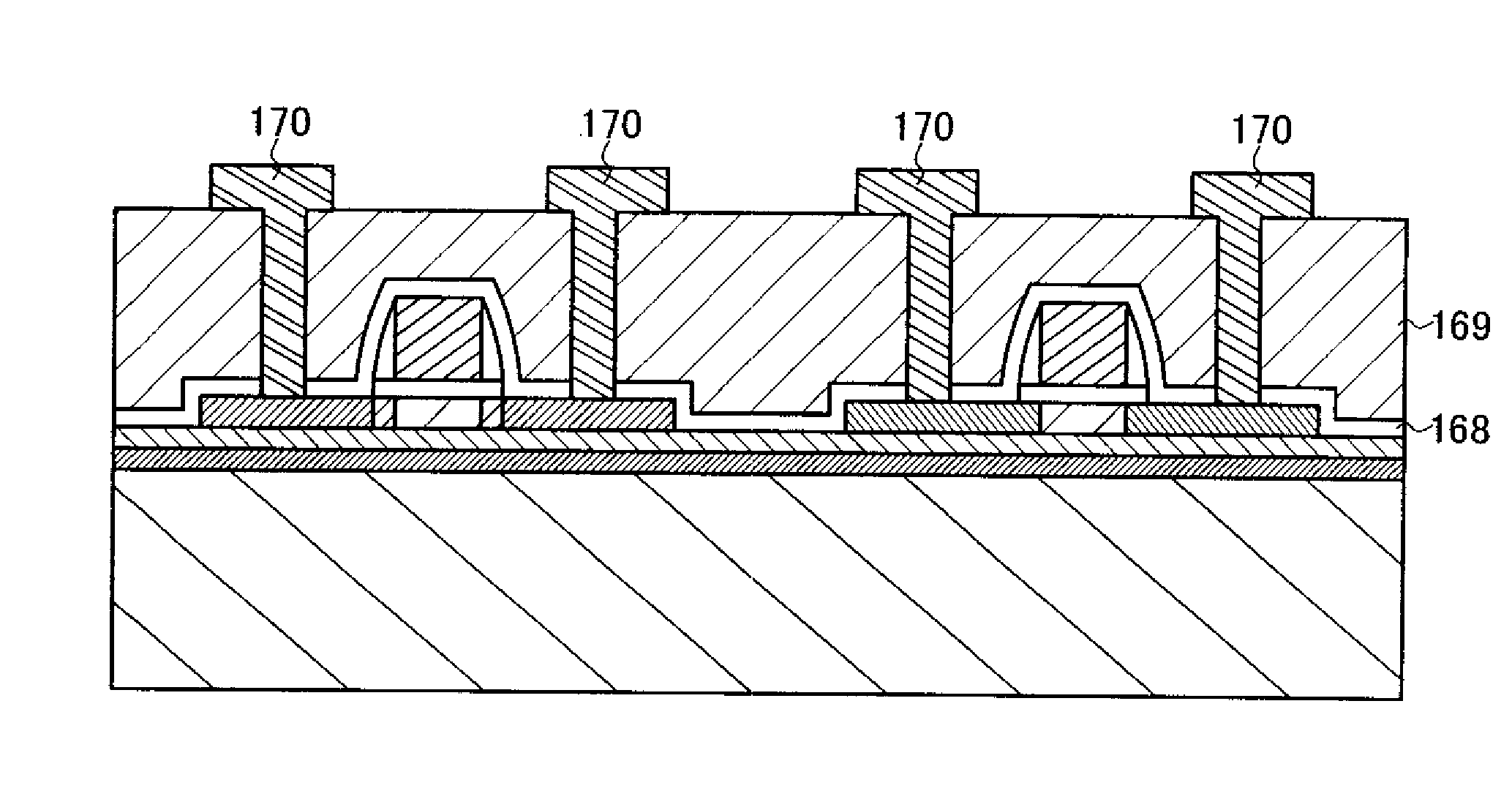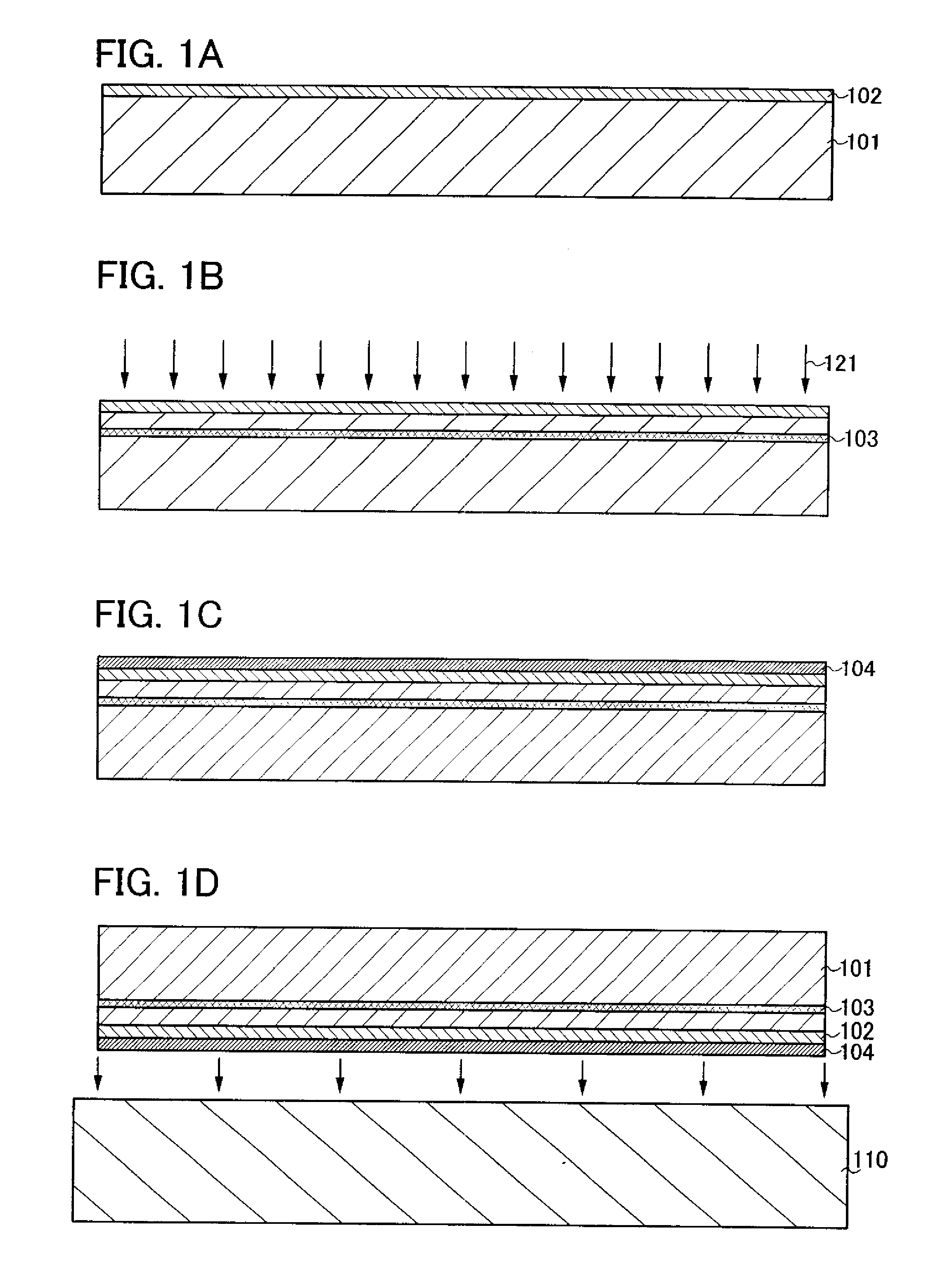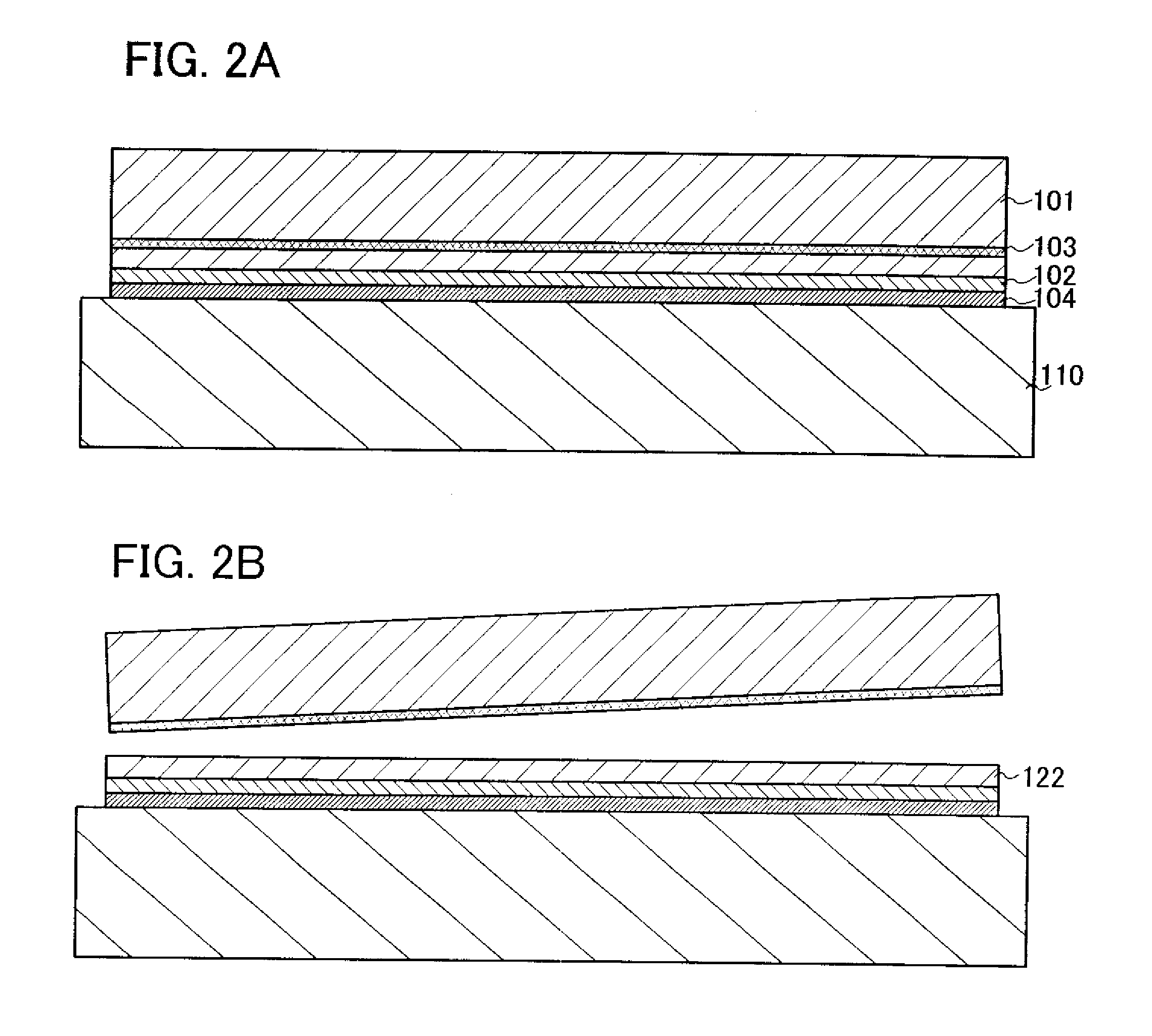Method for manufacturing soi substrate
- Summary
- Abstract
- Description
- Claims
- Application Information
AI Technical Summary
Benefits of technology
Problems solved by technology
Method used
Image
Examples
embodiment mode 1
[0033]This embodiment mode describes an example of a method for manufacturing an SOI substrate with reference to the drawings.
[0034]First, a semiconductor substrate 101 is prepared, and an insulating layer 102 is formed on a surface of the semiconductor substrate 101 (see FIG. 1A).
[0035]As the semiconductor substrate 101, a commercial semiconductor substrate can be used; for example, a single-crystal silicon substrate, a single-crystal germanium substrate, and a compound semiconductor substrate of gallium arsenide, indium phosphide, or the like can be used. Typically, sizes of the commercial silicon substrates are 5 in. (125 mm), 6 in. (150 mm), 8 in. (200 mm), and 12 in. (300 mm) in diameter and shapes of the commercial silicon substrates are circular. Note that the shape of the commercial silicon substrate is not limited to the circular shape, and a silicon substrate which is processed into a rectangular shape or the like can be used.
[0036]An insulating layer having a smooth surfa...
embodiment mode 2
[0074]This embodiment mode describes a method for manufacturing an SOI substrate, which is different from that in the above-described embodiment mode, with reference to the drawings. Specifically, a manufacturing method in which a base substrate provided with a nitrogen-containing layer on a surface thereof and a semiconductor substrate are bonded to each other is described.
[0075]First, the semiconductor substrate 101 is prepared, and then an insulating layer 202 is formed on the surface of the semiconductor substrate 101 (see FIG. 3A).
[0076]In this embodiment mode, the insulating layer 202 which serves as a bonding layer to be bonded to the base substrate is provided on a surface where a bond is formed between the semiconductor substrate 101 and the base substrate. The insulating layer 202 may have a single layer structure or a stacked layer structure, and an insulating layer of which a surface to be bonded to the base substrate (hereinafter also referred to as a “bonding surface”)...
embodiment mode 3
[0093]This embodiment mode describes a method for manufacturing a semiconductor device using the SOI substrate which is manufactured according to the above embodiment modes.
[0094]First, a method for manufacturing an n-channel transistor and a p-channel transistor is described as a method for manufacturing a semiconductor device with reference to FIGS. 5A to 5D and FIGS. 6A to 6C. By combining a plurality of thin film transistors (TFTs), various semiconductor devices can be formed.
[0095]In this embodiment mode, the SOI substrate which is manufactured according to the method of Embodiment Mode 1 is used as an SOI substrate. FIG. 5A is a cross-sectional view of the SOI substrate which is manufactured according to the method described with reference to FIGS. 1A to 1D.
[0096]The single-crystal semiconductor layer 122 of the SOI substrate is isolated for each element by etching, whereby a semiconductor layer 151 and a semiconductor layer 152 are formed as illustrated in FIG. 5B. The semico...
PUM
 Login to View More
Login to View More Abstract
Description
Claims
Application Information
 Login to View More
Login to View More - R&D
- Intellectual Property
- Life Sciences
- Materials
- Tech Scout
- Unparalleled Data Quality
- Higher Quality Content
- 60% Fewer Hallucinations
Browse by: Latest US Patents, China's latest patents, Technical Efficacy Thesaurus, Application Domain, Technology Topic, Popular Technical Reports.
© 2025 PatSnap. All rights reserved.Legal|Privacy policy|Modern Slavery Act Transparency Statement|Sitemap|About US| Contact US: help@patsnap.com



